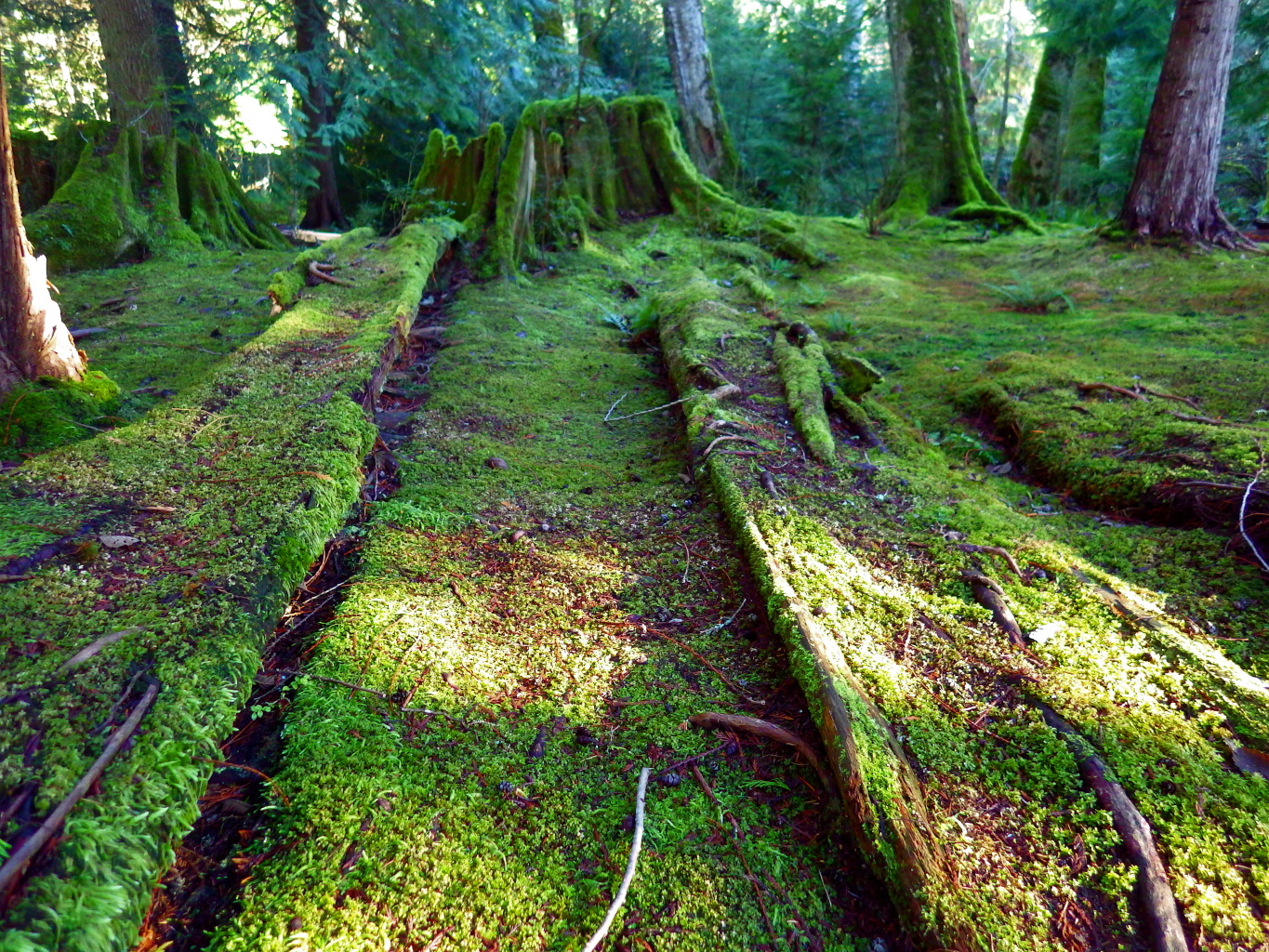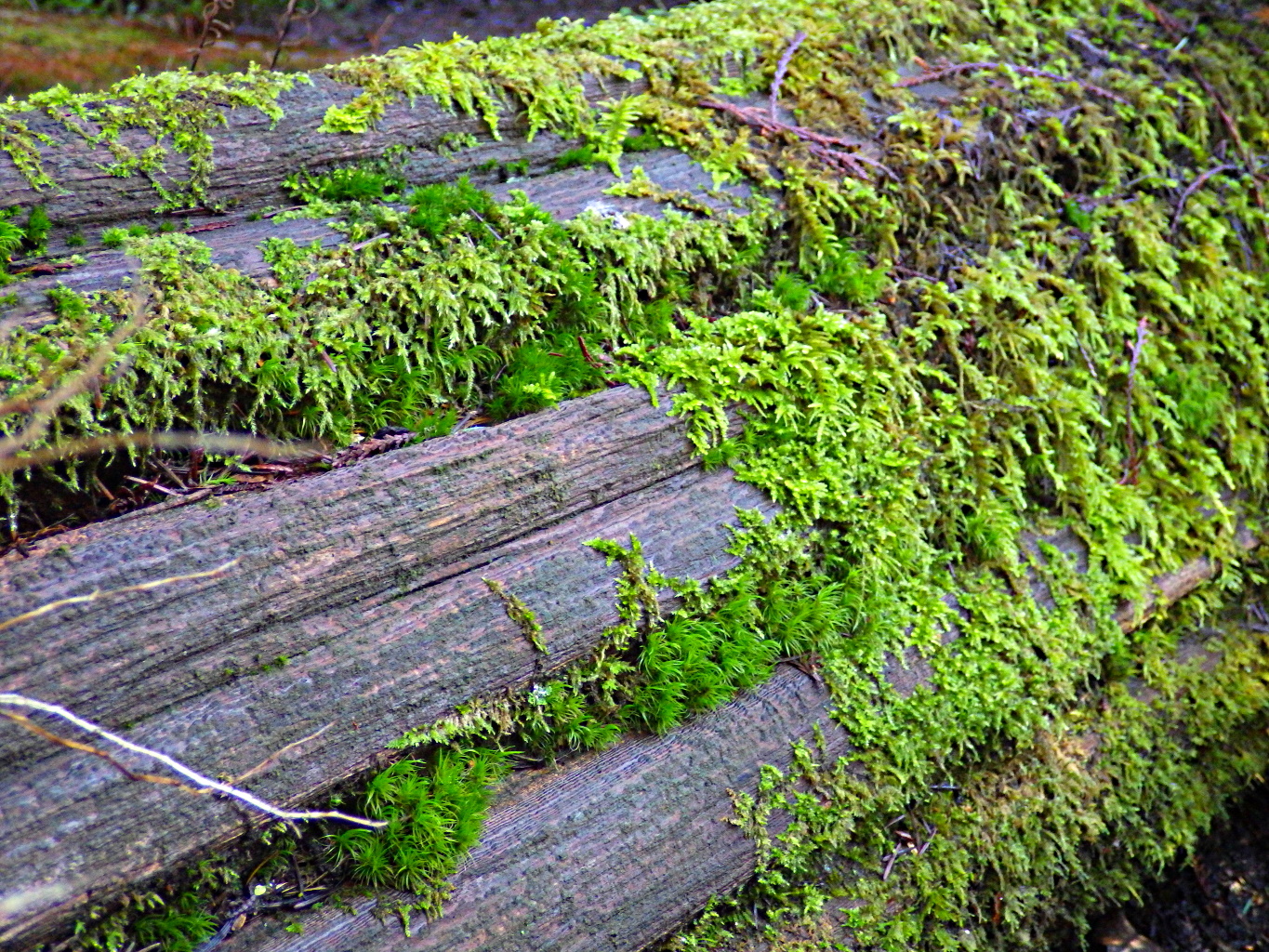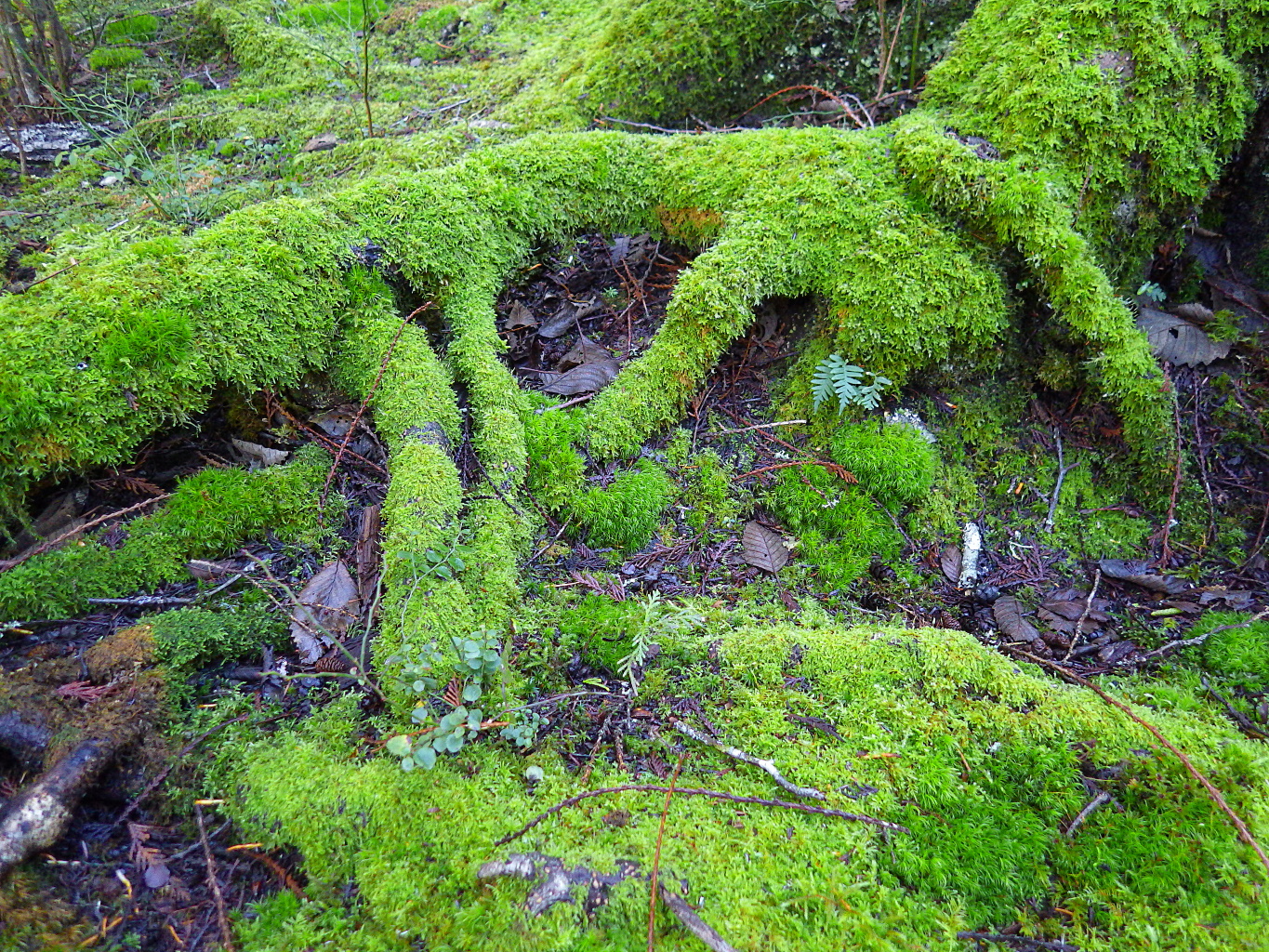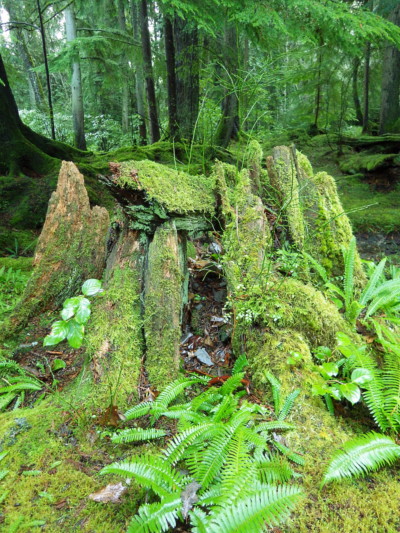Making a Moss Garden
There is no doubt that the Moss Garden at Bloedel Reserve is a visitor favorite. Its peaceful, shady green character is soothing and its distinctive look grabs people’s imagination. But what exactly makes it a “moss garden”? Parts of the Japanese Garden, as well as other Bloedel landscapes, use moss heavily. So what separates a true moss garden from a garden that simply incorporate moss into its design?
A Cool, Green Escape
The short answer is that moss is the focus of a moss garden. When people enter a moss garden, the moss should be what grabs their attention. Achieving that focus depends on adherence to certain design principles. Top among those principles is that the moss must be encouraged to cover a significant percentage of the ground, logs, rocks, and any other surfaces where moss is capable of growing. That does not mean the goal is 100% coverage, although that can be an enchanting effect. In fact, only one small portion of the Bloedel Moss Garden aims for 100% coverage.
There is no magic percentage of moss defines a moss garden. Rather we like the more subjective goal of making someone think “Wow, mossy!” To get that effect, we avoid covering the ground with large swaths of other ground covers or shrubs. Instead we let any non-mosses accentuate the moss. Ferns or shrubs planted “here and there” in small groups add pleasing texture and varying shades of green that compliment the moss in the garden.
Flowers for Punctuation
In addition to moss coverage, a true moss garden should avoid large, showy floral displays. A bank of rhododendrons in full bloom is certainly beautiful, but it steals the focus away from the moss. Some rhododendrons and azaleas are planted in the Bloedel Moss Garden along the road. They are there only to ease the visual transition between the Moss Garden and the Japanese Garden. As you go deeper into the Moss Garden, you’ll only find one rhododendron (and most guests probably won’t even notice it).
Flower-lovers need not despair at the thought of a moss garden devoid of flowers. In fact, we believe that a moss garden should have flowers. The flowers just should not divert the eye away from moss over long distances. This means that we have selected plants with more muted flower colors or plants that produce colorful flowers, but in smaller quantities, or small plants (like colorful Hepatica) that people can suddenly discover for that unexpected, up close, “Oh wow!” moment.
Room to Grow
Finally, moss gardens should make use of varying textures and forms to add visual interest to their designs. This is best achieved by providing a variety of growing surfaces for the moss. Some mosses prefer soil, some prefer rock, some rotted logs, and others the base of trees. By including these various habitats, we can encourage and support moss species diversity in the Moss Garden. So, guests see a broad selection of mossy shades of green and a wide range of textures as the moss covers the contours and forms in the landscape.
SIGN UP FOR OUR ENEWSLETTER
Stay up to date on all of the events and activities taking place at Bloedel Reserve.





